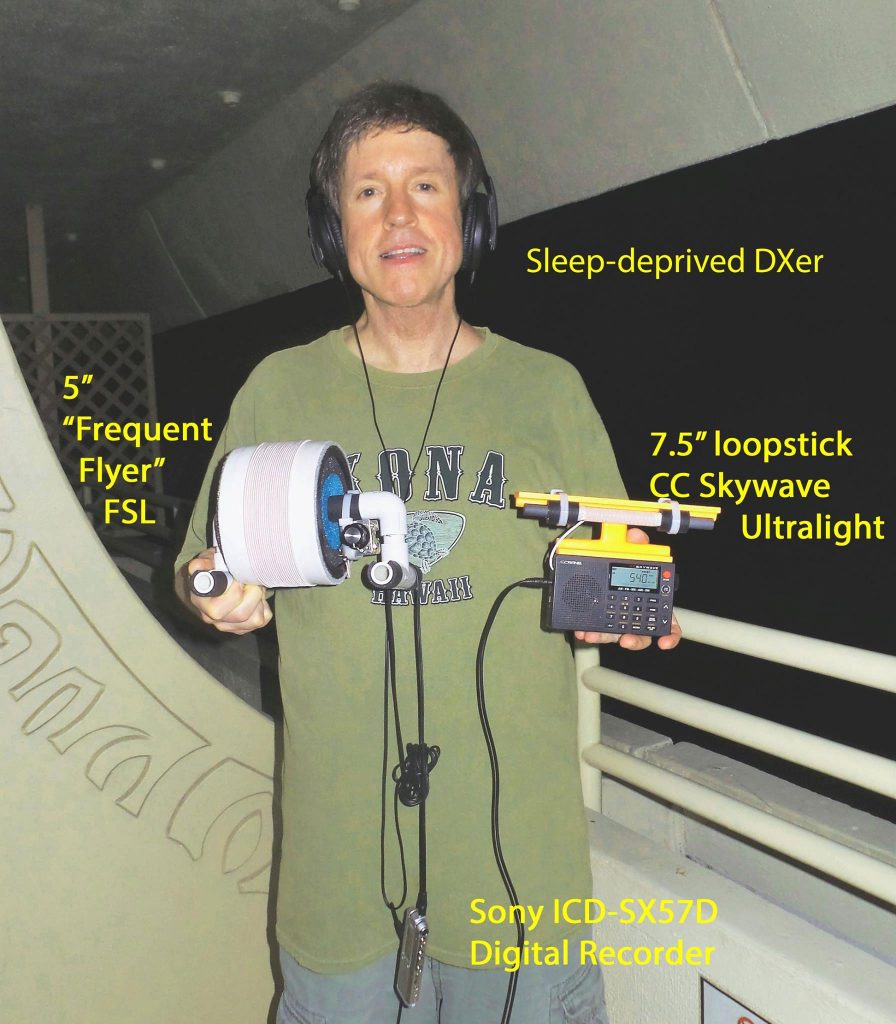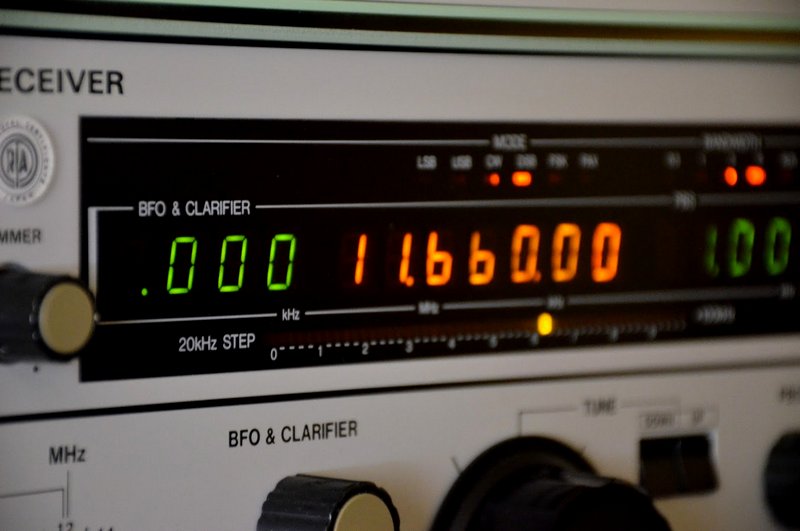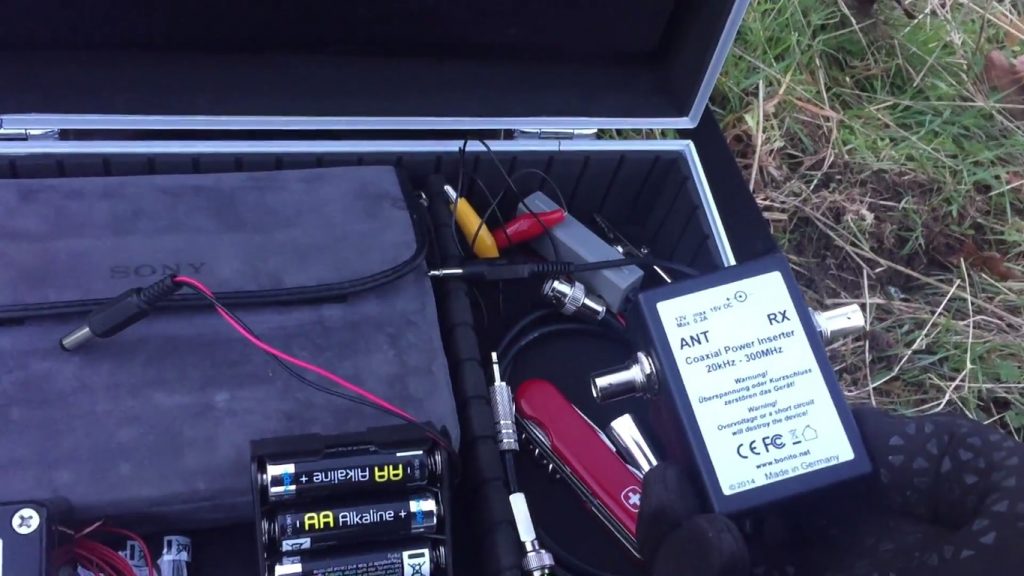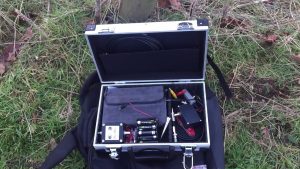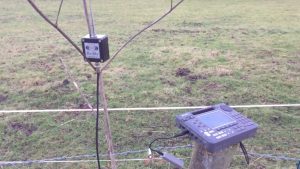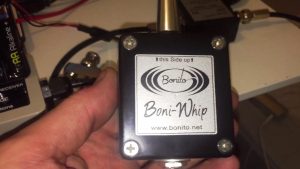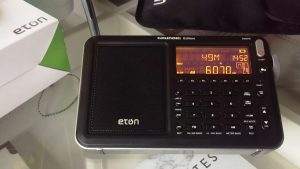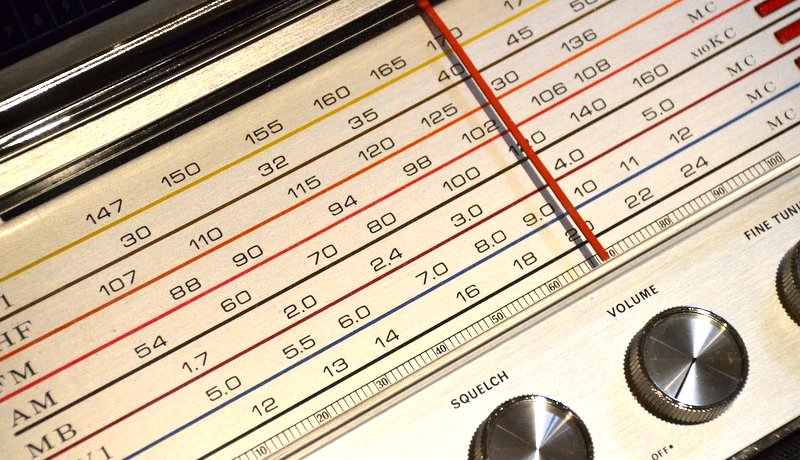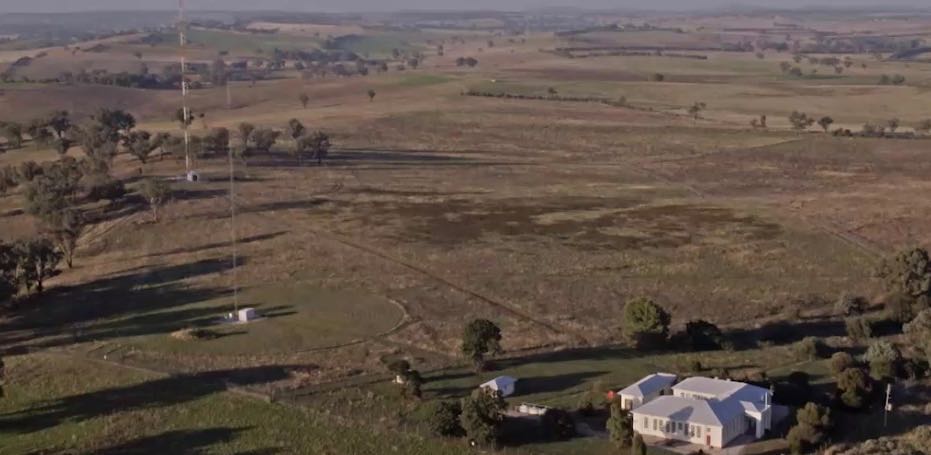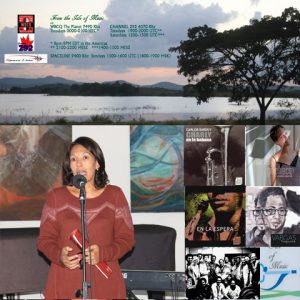Many thanks to SWLing Post contributor, Gary DeBock, who shares the following notes and recordings from an Ultralight DXpedition in Kona, Hawaii:
April 2017 Kona, Hawaii Ultralight DXpedition
The first long-range test of a “Frequent Flyer” FSL Antenna
By Gary DeBock, Puyallup, WA, USA April 2017
Introduction
Ever since the U.K.’s Graham Maynard published his innovative article about the “Ferrite Sleeve” antenna in early 2011 an enthusiastic group of DXers and tinkerers has continually refined and upgraded the design, with most of them going in the pursuit of maximum possible gain. Monster FSL models were designed with weights of up to 38 pounds (17 kg), and considering the size, weight and subversive appearance of the typical model, the general assumption was that this new type of antenna was highly unsuitable for air travel, since it would send airport security personnel into a serious panic.
This situation continued for a full 6 years, during which the FSL antenna became a star performer in the related new niche of ocean cliff transoceanic DXing. But was there another possible application for the antenna’s compact performance advantage? What if a very lightweight, high-performing model could be designed which would not only provide a huge boost in DXing gain, but fit inside a hand-carry suitcase, and routinely pass airport security screening inspections around the world? This was a tough design challenge, but well worth the effort if successful!
Since the new antenna would need the maximum possible performance for its small, lightweight size, the use of the Russian surplus 100mm x 20mm x 3mm ferrite bars was mandatory. Every possible effort would be used to make the antenna as compact and lightweight as possible, although the choice of the highest-sensitivity 1162/46 Litz wire was critical for best performance. The PVC frame would be shrunk down to the smallest practical size. Finally, in a major experimental effort here over the winter season, the first of the new 5 inch (127mm) “Frequent Flyer” FSL’s became a reality. The finished antenna had a very non-subversive appearance, and could fit inside a custom-sized plastic tote within a hand-carry suitcase. Most importantly, it could still deliver a serious amount of inductive coupling gain– roughly similar to that provided by a 4 foot (1.22m) air core box loop, but with the advantage of somewhat lower noise reception.
Because the Russian surplus 100mm x 20mm x 3mm ferrite bars are extremely scarce (without any current supply source) only five of these original “Frequent Flyer” models would be made, although alternative models using the commonly available 140mm x 8mm ferrite rods were also designed. These antennas would be somewhat heavier and larger, but these “Baby FSL” ferrite rod models could be easily assembled from parts available on eBay, fit inside the hand-carry suitcases, and still deliver a lot of DXing performance (while routinely passing airport security screening). Finally, an economic model using the commonly available 62mm x 12mm x 4mm Russian surplus ferrite bars was also designed. This lightweight FSL can be constructed for around $65 US, and can still provide a serious DXing gain boost to a stock Ultralight radio. For want of better terms, these three classes of “Frequent Flyer” FSL antennas are called the “first class,” the “business class” and “coach class” models, with FSL sensitivity scores (ferrite length x coil diameter) of 585, 490 and 300 respectively.
From April 9-12 a Mini-DXpedition was conducted on a 6th floor oceanfront room at the Royal Kona Resort Motel in Kona, Hawaii. This was the first of many long-range DXing trips based upon the performance boost provided by the compact new antenna– which was specifically designed to easily pass through airport TSA security checkpoints. A 5 inch (127mm) “Frequent Flyer” FSL antenna was packed inside a matched-size plastic tote within a hand-carry suitcase, and breezed through TSA security screening in both the Seattle and Kona airports (without even a single question ever being asked). This was one of the “first class” Frequent Flyer models described previously, and was used to boost DX station gain on a 7.5″ loopstick C.Crane “Skywave” Ultralight radio. This combination was effective enough to track down many exotic Pacific Island stations (540, 621, 1440, etc.) at S9 levels during transmitter-site sunset skip propagation into Kona, as well as Asian TP-DX of varying strength around local sunrise.
This Kona trip was primarily designed as an anniversary celebration with my wife, so before we took off I had (somewhat reluctantly) agreed that DXing would have a secondary priority to sightseeing over the four days. Because of this there were many frequencies that could not be investigated in Kona, but I knew very well which Pacific island stations were tough challenges in both North America and Japan, and I was determined to go after them with a vengeance. 540, 621 and 1440 would all receive serious attention in Kona– not because they were great challenges in Hawaii, but because most DXers in both North America and Japan needed all possible information about them if they were to have any chance of reception at all. Besides this I was eager to try my long-range luck chasing exotic Asians around local sunrise with the innovative FSL antenna, but I knew that east-west propagation was almost totally dependent upon solar activity– and as it turned out both the A and K indexes shot up after our arrival.
Overall the Kona MW propagation to the Pacific islands was exceptional around local midnight (as expected), but the sunrise propagation was somewhat challenging for long range Asians. Perhaps the biggest success of this entire trip was the interest and excitement that the “Frequent Flyer” FSL antenna series (the major experimental project here this past winter) has inspired among DXers who routinely travel to foreign countries and other faraway venues. As I write this Craig Barnes of Wheat Ridge, Colorado is conducting his own 5 inch “Frequent Flyer” FSL- based DXpedition to Hawaii. Good luck, Craig!
Recordings
[Note: a selection of audio files have been embedded in the post below, but all audio is available to download and stream via the links provided.]
531 6DL? Dalwallinu, Australia Presumably the one with the same-sounding announcer and program as the one on 630-4QN at the time (at 1547 on 4-9; see MP3 for 630-4QN), but it didn’t seem to be exactly parallel (maybe a time zone delay?)
https://app.box.com/s/7bg1hruxrufccuys5axc4yzumexr3q36
540 2AP Apia, Western Samoa This station features a lot of Samoan music (with both male and female announcers), and dominates the frequency in Kona at night as long as it transmits. Unfortunately it doesn’t follow the listed PAL sign off time of 1000, but runs past this time routinely, which made it tough to track down an exact sign off time during my limited sessions. My guess is that it signs off sometime between 1030 and 1100. The following MP3 is of S9+ level Samoan Christian worship music at 0931 on 4-9. This overwhelming signal was one of the most awesome recorded during the entire DXpedition:
https://app.box.com/s/8ejvx8s7udh5ibtqymtxs5ew65mquqcl
Energetic Samoan music at 0956 on 4-12. This is typical of the station’s music format
https://app.box.com/s/tbo84s7gb2jci6gfxkawo7rsqpmpkyp3
More typical Samoan choral music at 0835 on 4-11 — a staple of programming in the station’s format
https://app.box.com/s/z8ecbvx14fyqx0tpjtw2ahy2r7omhst4
Relaxing Samoan choral music at 1013 on 4-12
https://app.box.com/s/v50700yxviojl4qkkdgh9omdx1hf0yrl
The usual male announcer in Samoan at 1028 on 4-12
https://app.box.com/s/03xy87zls2aqqz52oiz8pbobi9f433rt
The usual female announcer in Samoan at 0856 on 4-11
https://app.box.com/s/6rkd8ckcd1005fyc5itupxowaf6jqhex
558 Radio Fiji One Suva, Fiji Somewhat of an underperformer considering its South Pacific location and (nominal) 10 kW power level. My guess is that the station has some transmitter and/ or antenna issues. Here is some fair level male speech with island music at 1001 on 4-9, which was the strongest signal it managed during the entire trip
https://app.box.com/s/ly0u5y34rg85e1aotimyjjj1bksunsd3
558 UnID-TP Once again, this weak signal sounded a lot like the 630-4QN program at the time (1548 on 4-11), so my guess is that 6WA in Wagin, Australia is the most likely possibility
https://app.box.com/s/10plmz0gumpjk7ymwi6ay44oqzo67ong
603 HLSA Namyang, S. Korea One of the common Asians which ran the gauntlet of dicey solar activity. It was fairly good at 1521 on 4-12, but was MIA during a couple of days
https://app.box.com/s/9s3g67w2j5ge9ggsj31kwuwnqmfdiyh9
621 3RN Melbourne, Australia This LR network station would start to fade in just when Radio Tuvalu was about to sign off (around 1000), although it never provided any serious competition for the exotic station. This MP3 was made just after Tuvalu’s sign off at 1006 on 4-9
https://app.box.com/s/x0k4bnu3jmytorhzjphz5a6nqyet4h5r
621 Radio Tuvalu Funafuti, Tuvalu A very tough station to track down on the mainland, but certainly a “piece of cake” in Kona. Routinely has sign off at 1003 UTC, preceded by island choral music and the national anthem (sung by the same choral group). Around 0950 a female announcer begins the routine by giving a monolog news broadcast about 5 minutes long, typically followed by an island music song right before the fixed 5-minute sign off routine. The latter two features are included in the following 8 minute recording (at near S9 strength) made at 0955 on April 10
https://app.box.com/s/3z2ql91i5afhhi6kmjsnvos4p9q2j56y
The usual female announcer with her 5 minute news broadcast at near S9 strength at 0955 prior to the sign off routine on April 11. The lady giving the correct pronunciation for “Tuvalu” is at the 11 second point
https://app.box.com/s/knpjrxdb40p7hfe9xx7djlwyz3fzf8j3
Around five minutes of typical Island choral music at good-level strength at 0921 on 4-9
https://app.box.com/s/0vouj030pvoxy96o7xtvg45zq0uxed1n
Here is a different recording of the female-announced news broadcast just prior to the sign off routine at 0956 on 4-9 (at very good strength)
https://app.box.com/s/u0rg1xlye0le5jth12x8wccw6nc5sv99
630 4QN Townsville, Australia This 50 kW station was far and away the strongest Australian signal heard throughout the trip. Unfortunately it wasn’t in the same time zone as fellow LR network stations on 531 and 558 in Western Australia, making parallel checks seem dubious. Here is a typical signal at 1543 on 4-9
https://app.box.com/s/j82og05m8v4umqacm78e41cs1xht21to
657 Pyongyang BS Pyongyang, N. Korea This bizarre station was far and away the strongest Asian heard during the trip– almost like it was a South Pacific semi-local. When solar activity cooled off it could blast in with serious power, such as at 1555 on 4-9
https://app.box.com/s/9exi01zvab4y2fjemxbqhz6ma1q3gv8o
For those who really don’t mind wacky-sounding music (this is your final warning), the 3 minute long version of this signal is posted at
https://app.box.com/s/m69fuqcxrjul7y06wu5f5ge63bap3cka
693 UnID-TP This mystery signal showed up at 1604 on 4-9, after NHK2 (JOAB) sign off. Obviously there is male speech and some kind of backup music at various times, but I’m totally unfamiliar with stations on this frequency (except for JOAB). Any hints or suggestions? This station only showed up on 4-9; rising solar activity brought in only 690-Honolulu splatter on the other three days
https://app.box.com/s/8yabwqs7llyac52tsfv4taannfuggedq
774 JOUB Akita, Japan Solar activity limited the usual potent signals from this NHK big gun, but it did manage fair strength at 1505 on 4-11
https://app.box.com/s/uigxcvv382u7ryq1k1xqcsvw7uuj5bd9
972 HLCA Dangjin, S. Korea Another Asian big gun taking somewhat of a hit from unfavorable solar activity at 1517 on 4-12
https://app.box.com/s/uigxcvv382u7ryq1k1xqcsvw7uuj5bd9
1017 A3Z Nuku’alofa, Tonga Island music at very good strength at 0944 on 4-9; this station was strong every evening at this same time
https://app.box.com/s/6cq35g3lio356v4hserwpehi5o3cofcc
Live play-by-play of a sports competition at 1015 on 4-12, with a “goal” at the 10 second point in the recording
https://app.box.com/s/umg0rj0as6h97wmwqsrqni57scs1woee
The usual male announcer in the Tongan language at very good strength at 0835 on 4-11
https://app.box.com/s/4ngp7fhuru3l6rmvgxnkqftu9nzmu3sn
The same Tongan male announcer at good level at 0953 on 4-11, obviously on “island time,” with very long pauses in his speech pattern
https://app.box.com/s/4y59xljxk0d24kvtbab8yjvnc5q1gc71
1035 Newstalk ZB Wellington, NZ Received late in sunrise enhancement at 1611 on 4-12, this was a rather modest signal from the Kiwi big gun, which never seemed to get anywhere close to its Oregon cliff strength during the entire trip
https://app.box.com/s/1lwotewd38bn4z26l786ihjv5eyuklzf
1098 V7AB Radio Marshalls Majuro, Marshall Islands One of the regular Pacific island stations received in Kona, and one of the best bets for Mainland reception. The frequency has very little QRM, although Newstalk ZB could be weakly received in between the island music songs after around 0900.
Strong island music at 0955 on 4-9 (its best performance during the trip)
https://app.box.com/s/cmqbngvvtnfvkm201jqlpcbws4te5wk5
More energetic island music at 0958 on 4-9
https://app.box.com/s/nvljx11f8tvrnrb2hyelci4fsxjwff93
Typical island music on the same night at 0948 (4-9)
https://app.box.com/s/znb2botiiuzq7201xponc35c7o06blov
1098 Newstalk ZB Christchurch, NZ Heard only once in between island songs on V7AB (at 0957 on 4-9); and never really strong enough to compete for the frequency with Radio Marshalls
https://app.box.com/s/x1i5e35rxkzgx6wxrnome06r9g2122j5
1440 Radio Kiribati Bairiki, Kiribati Because of its domestic frequency this obscure station is another of the toughest Pacific island stations (and countries) to receive on the Mainland, but some very helpful identity clues were discovered in Kona (where the station is a breeze to hear). The station routinely signs off at 0936 UTC each evening, with a very loud 1000 Hz audio tone right before it cuts power. The sign off routine includes station ID’s in both the local language and English around 0932 prior to the choral music national anthem, although because of her heavy accent the fact that the female announcer is talking in English might well go unnoticed. The full sign off routine is included in the following MP3, preceded by an Island music number (during which a 1440 Spanish pest attempts a run on the frequency, only to be immediately drowned out)
https://app.box.com/s/s9sgwesnmi3ljjf1fkuhlsb08st7ty5y
The station uses a distinctive 4-bong time signal on the half hour, as in this recording made at 0929 UTC (at the 35 second point).
https://app.box.com/s/ks6n49yjreqdykdu2am76jl7qqj9mvyu
The American country music format can be heard prior to the 4-bong time signal.
Prior to the sign off routine this station also uses its female announcer to give a final news update (like 621-Tuvalu). This recording is of such a news update at 0925 on 4-11, with several mentions made of the American president
https://app.box.com/s/a1zx6jelrvhguyzjfy6b5dgwlfjfceij
This station plays a lot of American country music (of all formats). Here is typical programming at 0912 on 4-11
https://app.box.com/s/fdtbl3tk01yz7u2y5lb7xyaaauc33km8
1566 HLAZ Jeju, S. Korea Fairly regular with its Chinese Christian service around 1530 each morning in Kona, but never at very great strength (possibly due to unfavorable solar activity). Here at 1609 on 4-9 it is the music station playing the Chinese version of “I Would Rather Have Jesus,” in a mix with the (presumed) Mainland Chinese Yanbian Jammer
https://app.box.com/s/m66yi638bm6r1vrigiewo9680yuydvk6
1566 Yanbian, China (Presumed location, Jammer) Because of Chinese inflection this is the apparent co-channel of HLAZ in the same recording at 1609 on 4-9; it was also received at 1600 on 4-10 with Chinese 5+1 time pips (thanks to Chris Kadlec for his assessment)
https://app.box.com/s/m66yi638bm6r1vrigiewo9680yuydvk6
1593 CNR1 Changzhou, China Good strength at 1525 on 4-12, with co-channel NHK2 quite a bit weaker underneath
https://app.box.com/s/3shbri3d8hfpaej6kvzyklkz6kl1oq4j
1593 NHK2 Matsue/ Niigata, Japan In a mix with CNR1 at about an equal level around 1520 on 4-12
https://app.box.com/s/my9bdqgobvo4iuvgd3hhrkh9yap28xgr
Many thanks, Gary, for sharing your Kona DXpedition report and audio with us! It sounds like you had a great vacation and some excellent DX to boot!



